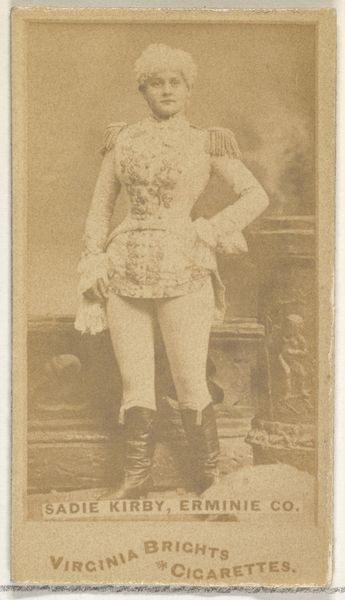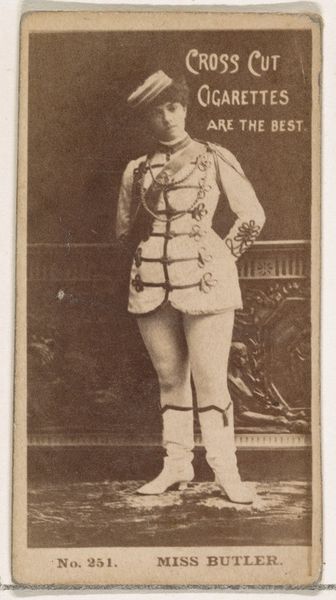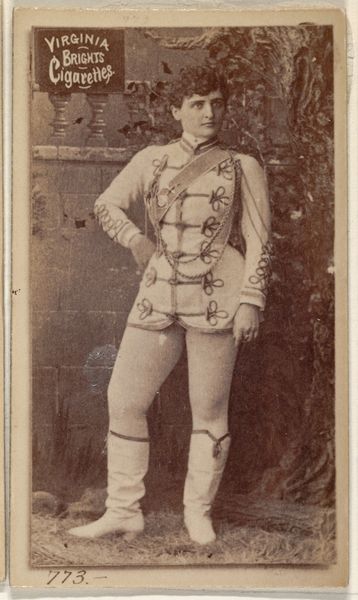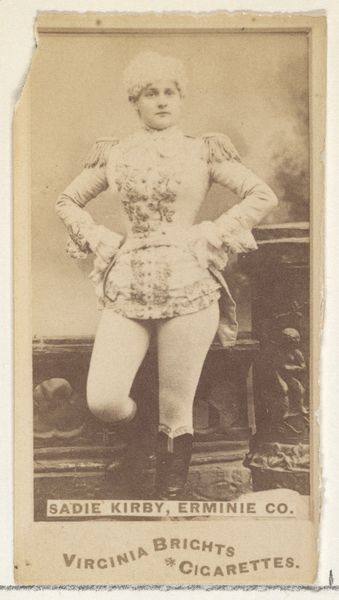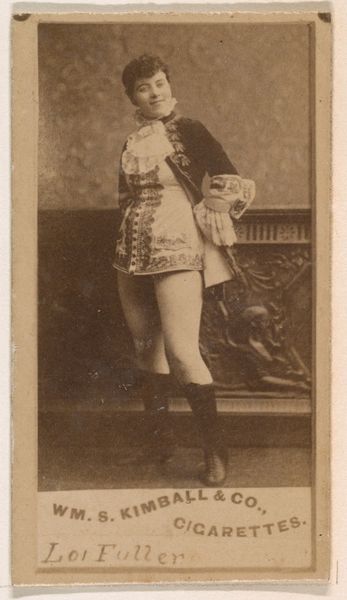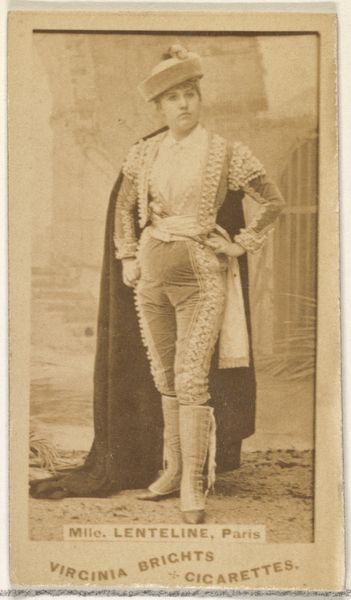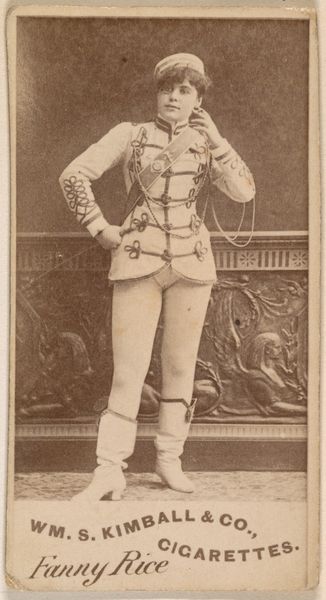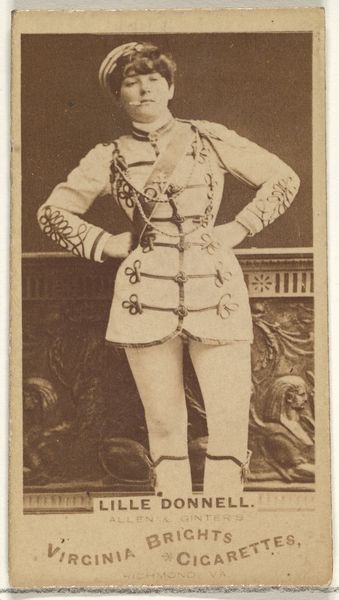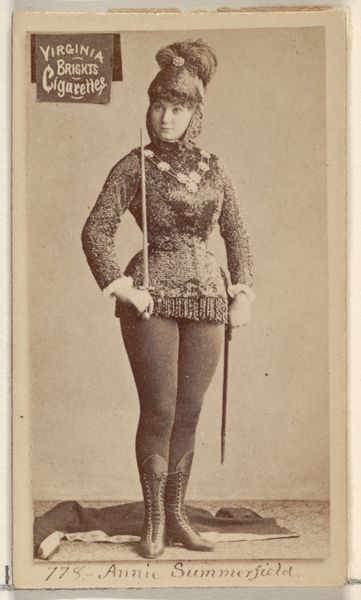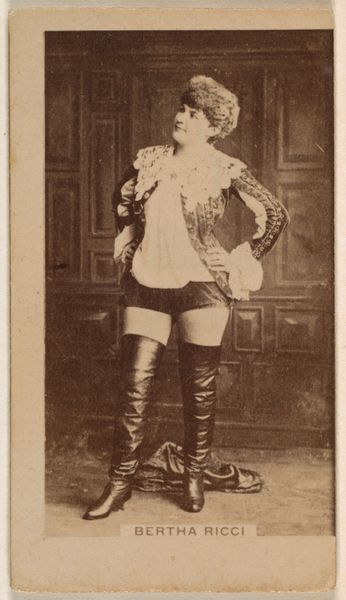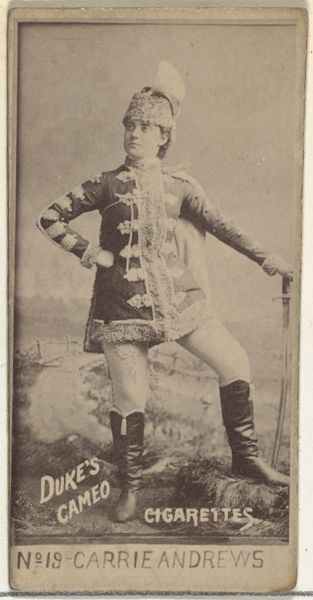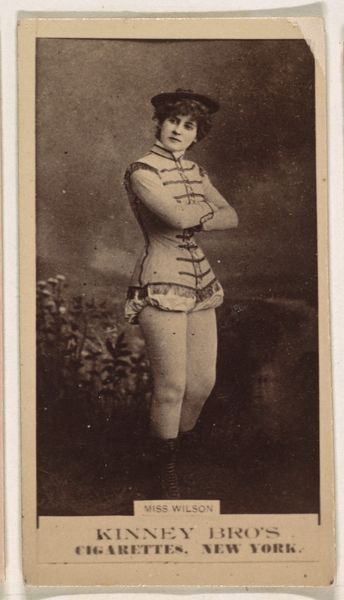
Sadie Kirby, from the Actresses series (N203) issued by Wm. S. Kimball & Co. 1889
0:00
0:00
drawing, print
#
portrait
#
photo of handprinted image
#
drawing
#
aged paper
#
toned paper
#
photo restoration
# print
#
charcoal drawing
#
charcoal art
#
coloured pencil
#
19th century
#
men
#
watercolour illustration
#
watercolor
Dimensions: Sheet: 2 5/8 × 1 3/8 in. (6.6 × 3.5 cm)
Copyright: Public Domain
Editor: So, here we have a rather striking portrait: "Sadie Kirby, from the Actresses series," created in 1889 by Wm. S. Kimball & Co. It seems to be a print, maybe even a hand-tinted one. It's on aged paper and a very interesting piece. I’m struck by how theatrical it is; almost staged like a performance, but what strikes you the most? Curator: What grabs me immediately is that this is not just a portrait, it's also advertising ephemera, a by-product of the tobacco industry, intended as a collectible premium included with cigarettes. The materials, cheap paper, and likely mass-produced printing techniques, are very revealing. Consider the working-class consumers targeted by this image versus the idealized portrayal of Sadie Kirby, who was in fact, a celebrity performer, so really she’s being consumed twice over in two very distinct markets. How does that commodification shift our understanding of her image? Editor: That’s fascinating. The cigarette cards became a kind of currency in themselves, didn’t they? So the portrait, even of an actress, takes on a life far beyond just art. The company probably thought of it more as an advertisement. Does the fact it’s advertising change the meaning of her costume at all, and is there a relationship between art and labor in this case? Curator: Absolutely. This image collapses traditional high/low art boundaries. Look closely. The costume itself, with its intricate embellishments, hints at the labor involved in its creation – likely the exploitation of garment workers. Consider too the laborers who toiled to produce the cigarettes and print these cards. It really is about understanding how these kinds of portraits entered mass circulation and what social role it played. Editor: I never would have thought of it that way, but I see it now, viewing art through labor and its social impact, which is more profound than the image itself. Thank you for a totally new perspective. Curator: You’re very welcome, considering the historical implications, even a humble card provides so much information on manufacturing practices and consumer consumption.
Comments
No comments
Be the first to comment and join the conversation on the ultimate creative platform.
